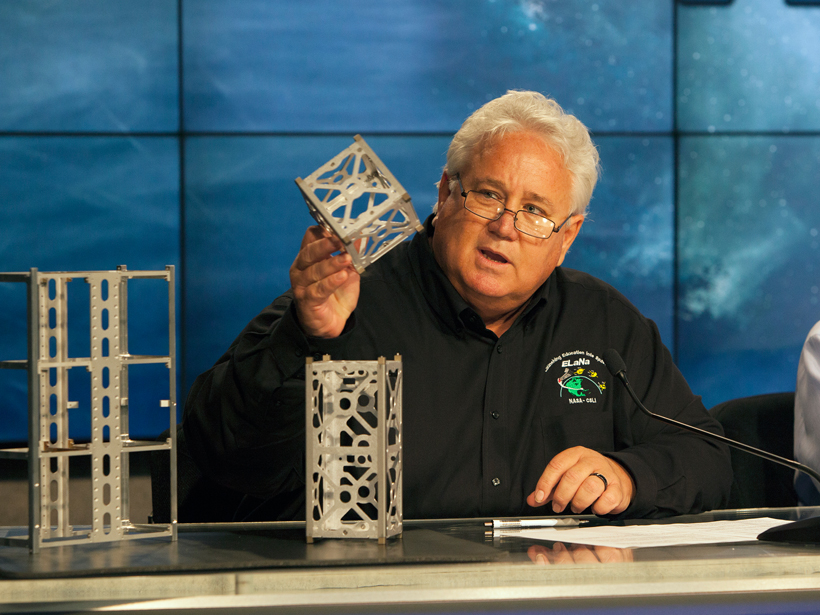The vehicle selection is good news for more than 50 priority CubeSats awaiting launch during the next 3 years.
NASA has selected three companies to provide demonstration commercial launch vehicles to deploy small satellites into low-Earth orbit, the agency announced last week. The result: A class of satellites known as CubeSats, microsats, or nanosatellites will soon fly on small rockets dedicated to their own missions rather than tag along with larger NASA payloads to orbits that can limit the scientific effectiveness of the hitchhikers. This is good news for more than 50 priority CubeSats awaiting launch during the next 3 years, said NASA officials at a 14 October briefing at the Kennedy Space Center in Florida. It will also lead to the development of many more small satellites and promote the commercialization and democratization of space, the officials said.
NASA’s Launch Services Program (LSP) awarded contracts to Firefly Space Systems, Inc. ($5.5 million), Rocket Lab USA, Inc. ($6.9 million), and Virgin Galactic, LLC. ($4.7 million), following a request for proposals the agency issued in June. The companies are required to launch demonstration flights by 15 April 2018; NASA will track rocket design and technology milestones.
The launch vehicles will support low-cost and innovative payloads and provide space research opportunities for nonprofits, schools, NASA missions, and commercial enterprises, according to the agency. The miniature satellites offer a low-cost means to conduct Earth and space science research, Earth observation, technology development, and student experiments.
Flying First Class Instead of Coach
“CubeSats will now be the primary payloads on these vehicles. We can basically say we are now riding first class.”
With small satellites piggybacking onto primary missions, they have had to fly “coach class” into space, said Garrett Skrobot, lead for NASA’s Educational Launch of Nanosatellites mission for LSP. “We had to build our science around those particular orbits or sacrifice some of the science,” he said. “CubeSats will now be the primary payloads on these vehicles. We can basically say we are now riding first class.”
Mark Wiese, LSP flight projects office chief at Kennedy, said the launch vehicle selection “is a huge step for the commercialization of space.” He added that the price tag for the microsat launches would be considerably lower than the $100 million-plus cost for larger missions.
Healthy Competition
Maureen Gannon, Firefly’s vice president for business development, said the company plans to eventually ramp up to offer weekly scheduled microsat launches, “allowing customers such as NASA to pick and choose flights that work best for them, that fit their mission and their schedule.”
Rocket Lab USA CEO Peter Beck said the average mass of small satellites has decreased by about 75% in recent years, and dedicated launch vehicles will be able to take more of these small satellites into space without compromising their scientific missions.
“You’re seeing companies that are coming out to solve problems in very different ways, and that’s healthy,” Steve Isakowitz, president of Virgin Galactic, said. “I view that as a great opportunity to see the market grow.”
—Randy Showstack, Staff Writer
Citation: Showstack, R. (2015), NASA selects launch vehicles for small satellites, Eos, 96, doi:10.1029/2015EO037915. Published on 22 October 2015.
Text © 2015. The authors. CC BY-NC 3.0
Except where otherwise noted, images are subject to copyright. Any reuse without express permission from the copyright owner is prohibited.

